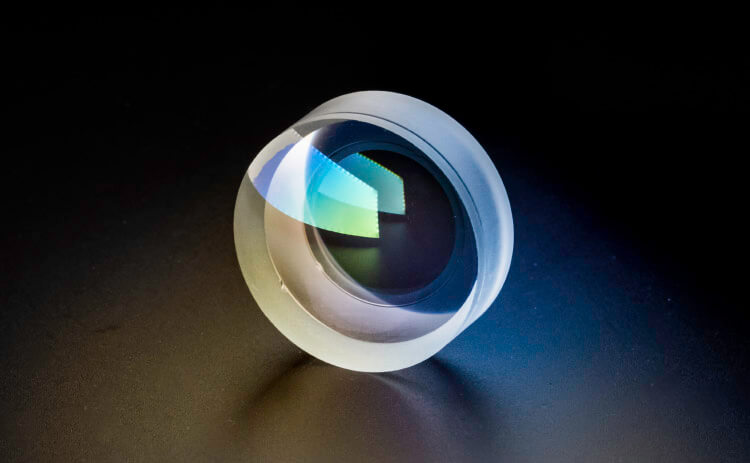Shanghai Optics manufactures high-quality plano-convex lenses, which are optical lenses with a positive focal length. These all-purpose lenses are available in a wide variety of sizes, substrates, and coatings and can be customized for your application.
These lenses work well with an infinite conjugate and are ideal for simple imaging. They are especially suitable for focusing applications utilizing monochromatic illumination, as well as for light collimation. Since these lenses have one flat surface and one convex surface, orientation matters. In most applications, the flat surface is oriented to face the focal plane.
Our lenses are ideal for a wide variety of applications, including industrial, robotics, pharmaceutical, and defense.
When plano-convex lenses are used for laser cutting, they are best suited for high-turnover cutting applications and when cutting thick materials. In these situations, the plano-convex lens provides a greater cut width, allowing the laser’s oxygen assist to enter the cut and aid in the process. Plano-convex lenses also offer a greater depth of field, which helps create a taperless edge.
Contact us for manufacturing limits or custom specifications.

The index of refraction, Abbe number, laser damage threshold, Knoop hardness and scratch resistance all depend on the substrate used. The index of refraction of our optical components typically ranges from around 1.4 to 4. The substrate N-Bk7, which is often used for applications with visible light, has an index of 1.517. Germanium, on the other extreme, has an index of refraction of 4.003. Inhomogeneity refers to the variation of index of refraction in a glass. An inhomogeneity class of 0 means that the maximum permissible variation of index of refraction is +/- 50 x 10-6. An inhomogeneity class of five means that the lens has a maximum permissible variation of index of refraction of is +/- 50 x 10-6.
The Abbe number of a plano-convex lens tells us how much dispersion the lens exhibits. It is calculated by comparing the refractive index of the substrate at three benchmark wavelengths: f (486.1nm), d (587.6nm), and c (656.3nm). The higher the Abbe number, the less dispersive the substrate is.
Optical glasses may have Abbe numbers from 20 to about 65. If the Abbe number is less than 50, the glass is referred to as flint glass, while an Abbe number greater than 55 indicates crown glass.
Laser damage threshold is a specification given for all laser-grade optics. It quantifies how much laser power per area the surface of the glass can withstand without damage. An optic with damage threshold ratings of 0.5 J/cm² @ 150 femtosecond pulses and 100 kW/cm² CW should be able to withstand 0.5 J per square centimeter from a high-repetition femtosecond pulse laser or, alternately, 100 kW per square centimeter from a high-power CW laser.
Other specifications of plano-convex lenses include size, radius of curvature, center thickness tolerance, surface finish, and surface quality. Our team of optical designers can work with you to design your system, and we are able to custom-produce precision lenses to meet your needs.
| Specifications | Factory Standards | Manufacturing Limit |
| Dimension Tolerance | +/-0.05mm | +/-0.01mm |
| Center Thickness Tolerance | +/-0.05 mm | +/-0.01mm |
| Radius Tolerance | +/-0.3% | +/-0.2% |
| Surface Quality(S/D) | 40-20 | 10-5 |
| Irregularity | 1/4 Lambda | < 1/10 Lambda |
| Centration(arc min) | 3′ | 1′ |
Shanghai Optics’ plano-convex lenses, known for their spherical surface and positive focal length, offer a versatile and customizable solution for a wide range of optical applications. This type of lens is called a plano-convex lens, and it is ideal for systems requiring precision light collimation, laser cutting, and imaging tasks. With applications that range from forming real images in laser systems to acting as a magnifying glass to produce virtual images, these lenses are highly adaptable. The spherical surface design also minimizes spherical aberrations, enhancing image quality. When compared to a concave lens, which diverges light rays, the plano-convex lens converges light rays, making it essential for infinite conjugate systems. By selecting substrates such as grade fused silica, customers can further optimize properties like the index of refraction, Abbe number, and laser damage threshold. Whether your application demands high-power laser capabilities or precise imaging with minimal dispersion, Shanghai Optics’ expertise ensures the highest quality optical components. Our team is ready to collaborate with you to design and produce lenses that meet the specific needs of your system.